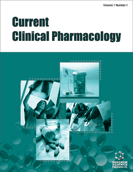Abstract
Background: The molecular mechanism of silencing genes using small interference RNA is as particular and innovative phenomenon as the proposed delivery systems to release them. Recent advances in RNAi have resulted in the development of multiple siRNA candidates that are currently being evaluated in preclinical / clinical instances. SNALP®, Atuplex® and Rondel® technologies stand out; they are mainly based on polymers, cyclodextrins or lipids.
Method: The objective of this work is to review the main features that Gene Therapy Medicinal Product under current clinical evaluation present from a pharmaceutical technology point of view; it tries to bring up theoretical concepts that give scientific support to the interpretation of data obtained during pharmaceutical development process. It is basically focused on improving the translation from bench/theoretical concepts to bedside of non viral vectors carrying siRNA.
Results: The extensive presence of lipid-based nanoparticle non-viral systems in clinical stages is due to the advantages of their formulations. These include: safety, low immunogenicity, high degree of material properties control, function tuning and ability to impact pharmacokinetics and in vivo biodistribution. This work presents a pharmaceutical approach so as to improve the potential of success in siRNA delivery using liposomal systems.
Conclusion: Formulation design should be increasingly addressed with industrial criteria; it should be based on quality by design and on the estimation of critical attributes that affect product performance, and supported by a range of characterization techniques and appropriate analytical methods.
Keywords: Gene therapy, antisense therapy, GTMP, siRNA nanodelivery systems, liposomal formulations, gene silencing.
Graphical Abstract
Current Clinical Pharmacology
Title:Lipid-based siRNA Nanodelivery Systems: A Learning Process for Improving Transfer from Concepts to Clinical Applications
Volume: 13 Issue: 3
Author(s): Sebastián Ezequiel Pérez*Adriana Mónica Carlucci
Affiliation:
- Department of Pharmaceutical Technology, Faculty of Pharmacy and Biochemistry, University of Buenos Aires, Ciudad Autonoma de Buenos Aires, Argentina, Junin 956 (C1113AAD) Ciudad Autonoma de Buenos Aires,Argentina
Keywords: Gene therapy, antisense therapy, GTMP, siRNA nanodelivery systems, liposomal formulations, gene silencing.
Abstract: Background: The molecular mechanism of silencing genes using small interference RNA is as particular and innovative phenomenon as the proposed delivery systems to release them. Recent advances in RNAi have resulted in the development of multiple siRNA candidates that are currently being evaluated in preclinical / clinical instances. SNALP®, Atuplex® and Rondel® technologies stand out; they are mainly based on polymers, cyclodextrins or lipids.
Method: The objective of this work is to review the main features that Gene Therapy Medicinal Product under current clinical evaluation present from a pharmaceutical technology point of view; it tries to bring up theoretical concepts that give scientific support to the interpretation of data obtained during pharmaceutical development process. It is basically focused on improving the translation from bench/theoretical concepts to bedside of non viral vectors carrying siRNA.
Results: The extensive presence of lipid-based nanoparticle non-viral systems in clinical stages is due to the advantages of their formulations. These include: safety, low immunogenicity, high degree of material properties control, function tuning and ability to impact pharmacokinetics and in vivo biodistribution. This work presents a pharmaceutical approach so as to improve the potential of success in siRNA delivery using liposomal systems.
Conclusion: Formulation design should be increasingly addressed with industrial criteria; it should be based on quality by design and on the estimation of critical attributes that affect product performance, and supported by a range of characterization techniques and appropriate analytical methods.
Export Options
About this article
Cite this article as:
Pérez Ezequiel Sebastián*, Carlucci Mónica Adriana , Lipid-based siRNA Nanodelivery Systems: A Learning Process for Improving Transfer from Concepts to Clinical Applications, Current Clinical Pharmacology 2018; 13 (3) . https://dx.doi.org/10.2174/1574884713666180829143054
| DOI https://dx.doi.org/10.2174/1574884713666180829143054 |
Print ISSN 1574-8847 |
| Publisher Name Bentham Science Publisher |
Online ISSN 2212-3938 |
 41
41 2
2 1
1Related Articles
-
Sex Differences in Alcohol Use Disorder
Current Medicinal Chemistry Synthesis, In Vitro Activity and Rationalisation of a Series of Dialkyl Esters of 5-Aminosulfonylisophthanoate as Potential Estrone Sulfatase (ES) Inhibitors
Letters in Drug Design & Discovery Curcumin, an Active Constiuent of the Ancient Medicinal Herb Curcuma longa L.: Some Uses and the Establishment and Biological Basis of Medical Efficacy
CNS & Neurological Disorders - Drug Targets Decreased Vascular Repair and Neovascularization with Ageing: Mechanisms and Clinical Relevance with an Emphasis on Hypoxia- Inducible Factor-1
Current Molecular Medicine Therapeutic Manipulation of the Immune System: Enhancement of Innate and Adaptive Mucosal Immunity
Current Pharmaceutical Design Radiation Oncology and Molecular-Targeted Therapy for EGFR and its Signal Transduction Pathways: Molecular Basis and Clinical Application for Improvement of Radiotherapeutic Outcomes
Current Signal Transduction Therapy Meet Our Editor-in-Chief
Current Cancer Drug Targets Orphan Nuclear Receptors, Excellent Targets of Drug Discovery
Combinatorial Chemistry & High Throughput Screening Pharmacokinetics of Biotech Drugs: Peptides, Proteins and Monoclonal Antibodies
Current Drug Metabolism Trends in Nanotechnology Patents Applied to the Health Sector
Recent Patents on Nanotechnology AKT: A Potential Target for Thyroid Cancer Therapy
Current Drug Targets - Immune, Endocrine & Metabolic Disorders Metabolism of Flavonoids in Human: A Comprehensive Review
Current Drug Metabolism Transferrin and the Transferrin Receptor: Of Magic Bullets and Other Concerns
Inflammation & Allergy - Drug Targets (Discontinued) On Mechanisms of Reactive Metabolite Formation from Drugs
Mini-Reviews in Medicinal Chemistry The Vitamin D/CYP24A1 Story in Cancer
Anti-Cancer Agents in Medicinal Chemistry Cancer Molecular Imaging: Radionuclide-Based Biomarkers of the Epidermal Growth Factor Receptor (EGFR)
Current Topics in Medicinal Chemistry Molecular Diagnosis in Autoimmune Skin Blistering Conditions
Current Molecular Medicine Regulatory T Cells and Skin Tumors
Recent Patents on Inflammation & Allergy Drug Discovery Nanomedicine: A New Frontier in Cancer Therapeutics
Current Drug Delivery β-sitosterol: Bioactive Compounds in Foods, their Role in Health Promotion and Disease Prevention “A Concise Report of its Phytopharmaceutical Importance”
Current Traditional Medicine






















